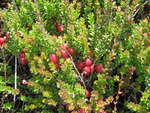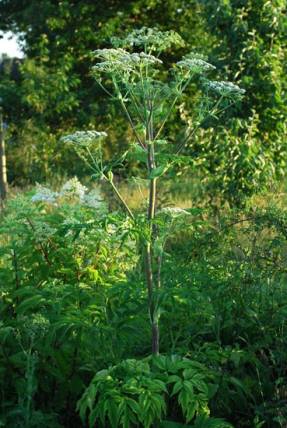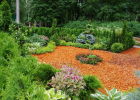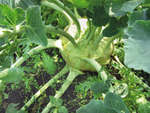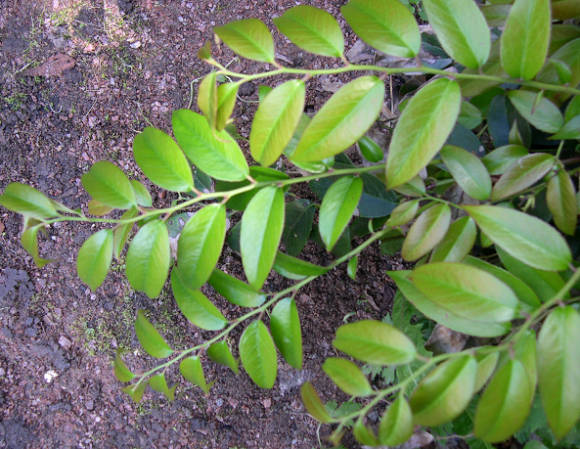
Today, gardening in Russia is going through hard times. A lot of unresolved problems have accumulated. But I would like to start not with problems, but with where we have serious successes and advantages.
Over the past decades, honeysuckle has literally burst into our gardens, and from a rare culture has become one of the main ones. Honeysuckle is the hope of Russian gardeners. In her selection, our country is significantly ahead of other countries. Our climate is perfect for growing this berry crop. While in milder climates, it is difficult to grow it. Finally, the price of honeysuckle berries is very high. For example, in Ukraine the price of a kilogram of honeysuckle is 5 - 7 times higher than the price of garden strawberries, in Moscow it is 3 - 5 times higher, even in Novosibirsk and Tomsk, where honeysuckle grows better than strawberries, and there it is 1.5 - 2 times more expensive. times.
A little more about this berry culture.
First, honeysuckle is one of the most hardy crops grown in our gardens. Being in a period of deep dormancy, its shoots and buds without damage tolerate frosts down to - 45 - 47 degrees C. There is a known case when in Chelyabinsk honeysuckle bore fruit after a frost of - 52 degrees This happened after a harsh winter of 1978 - 1979. For comparison, one can recall that raspberry buds die already at - 32 - 36 degrees C, leaves and horns of garden strawberries at - 16 - 18 degrees C, the threshold of winter hardiness of most cultivated apple varieties is - 38 - 40 degrees C.
Edible honeysuckle is the most frost-resistant crop during flowering. If flowers of currants, strawberries, apple trees, cherries, plums die at 0 - - 1 degrees C, then honeysuckle flowers can withstand frosts up to - 4 - 6 degrees C, and short-term ones up to - 7 degrees C. Considering that, according to statistics, gardens in the Urals , in Altai, in Siberia, on average, once every 4 - 6 years are left without a crop due to spring frosts, then honeysuckle, which frosts do not cause damage, can be considered a kind of "magic wand". Even in the most unfavorable year in terms of weather conditions, she will always reward the gardener with a harvest of berries.
Undoubtedly, one of the advantages of this culture is its unique longevity. If a black currant bush retains productivity from 4 - 5 to 7 years, red - up to 15 years, raspberries are most productive at the age of 2 - 4 years, then the bush grows old, its yield falls. Garden strawberries are most productive up to 3 years of age. The honeysuckle bush retains high productivity until the age of 25 - 30, 40 years, and there are cases when 150-year-old (!) Honeysuckle bushes bore fruit well - this is an indicator, this is durability! (Just imagine - not only your children, but also your grandchildren and even your great-grandchildren will be able to enjoy the berries from the bush that you plant today).
Profitability comes from durability. It is known that more than 50% of the cost of setting up a new berry garden is the cost of planting material. And there is a significant difference to spend on planting a garden every 5 years or every 40-50 years.

Edible honeysuckle is a very early ripening and early-growing culture. Its bushes often begin to bear fruit already in the year of planting, and the first marketable crop is given for 2 - 3 years. According to this indicator, only garden strawberries and raspberries are a competitor to this berry. But in terms of early maturity, honeysuckle in our gardens has no competitors: in Central Russia, the Southern Urals and the south of Western Siberia, early varieties of edible honeysuckle ripen in the first decade of June, when the earliest varieties of the same strawberry ripen for another two weeks.
It should be remembered that this culture is also resistant to most diseases and pests. This means that caring for her is quite simple. In addition, there are no diseases and pests - there is no need for plant treatments - which means that the berries from them are environmentally friendly, they do not contain any hazardous to health "chemistry".
.
Honeysuckle is a very tasty and very healthy berry. Its wild-growing forms often have a strong bitterness in taste. Modern garden varieties are completely devoid of bitterness. Their taste is harmonious, sweet and sour, very pleasant, most of all reminiscent of forest blueberries. There are also varieties with a taste of prunes, cherries, wild strawberries.The peel on the berries is very thin, the seeds are small, practically not felt, the flesh is tender. The berry juice has a dark ruby color. It is often used for tinting compotes from white berries and fruits. The honeysuckle makes a great jam and raw jam. Moreover, if we use slightly bitter forms and varieties of honeysuckle for processing, then the bitter taste completely disappears. Honeysuckle berries can also be frozen for long-term storage.
Honeysuckle fruits are used for medicinal purposes:
- they normalize the work of the gastrointestinal tract and liver;
- are an excellent remedy for hypertension, just a handful of berries - and blood pressure is mildly and for a long time reduced;
- The peoples of Siberia and Altai have long been using the juice of honeysuckle berries to treat festering wounds and various skin diseases;
- fresh berries are a good antipyretic agent; and it is noted that bitter-fruited forms in this regard are more valuable than varietal sweet-fruited;
- contain a lot of vitamins and minerals, therefore they are recommended for people who have suffered infectious diseases, who are engaged in hard physical and mental work;
- modern research has found specific substances in the fruits of honeysuckle that can remove salts of heavy metals from the body.
Not only honeysuckle berries have medicinal properties, but also other parts of this plant. So in Tibetan folk medicine, a decoction of annual branches with leaves is used as a powerful diuretic. In Siberia and Altai, decoction of leaves is used as a gargle for various diseases of the throat and mouth, and wounds are sprinkled with powder from dried leaves. This application is due to the strong antiseptic properties of the leaves of this plant. According to this indicator, they are equated to the action of decoctions of eucalyptus, sage, chamomile.
A decoction of honeysuckle flowers in folk medicine was used to treat headaches and dizziness.
I will add a few more words about the breeding of this culture. Today Russian varieties of honeysuckle are out of competition in the world. They are exceptionally large-fruited: in Tomsk, forms with a berry more than 4 cm in length were obtained. They are very productive - up to 4 - 6 kg per bush, do not crumble when ripe. Their taste can be compared to the taste of the best tropical berries and fruits. About 20 years ago, the author witnessed how breeders from Holland first tried honeysuckle at the Institute of Horticulture in Chelyabinsk. Their delight knew no bounds! After the tasting, one of the Dutch scientists said: “I don’t know why the Russians should be engaged in the selection of other crops for which they lagged behind us for decades, when they have such a miracle”!
The best varieties of honeysuckle are in the collection of the Sady Rossii company. You can order the newest varieties of honeysuckle seedlings for the fall with free postage via the online store //www.sad-i-ogorod.ru/ or by placing an order by calling a free phone number 8-800-100-00-66.

